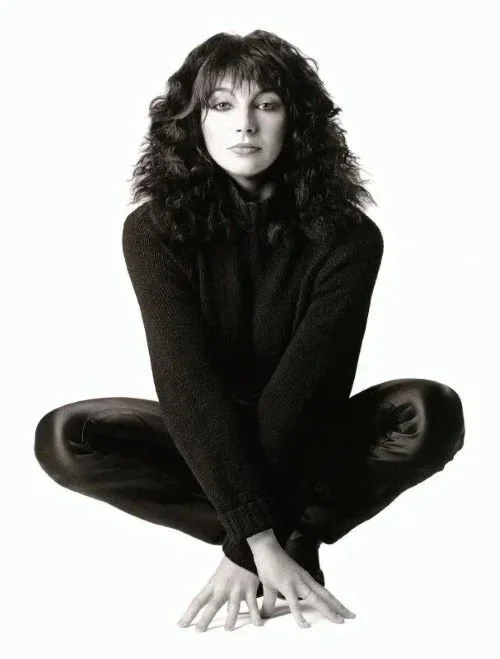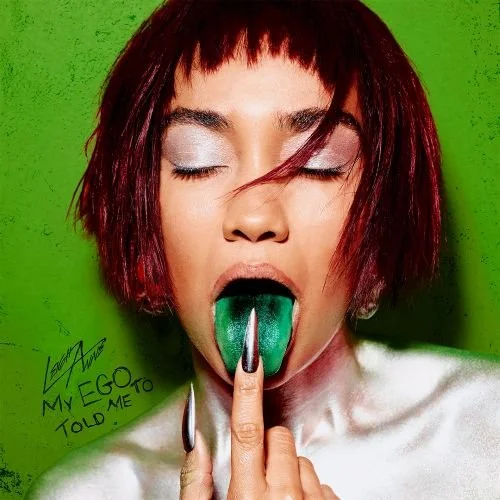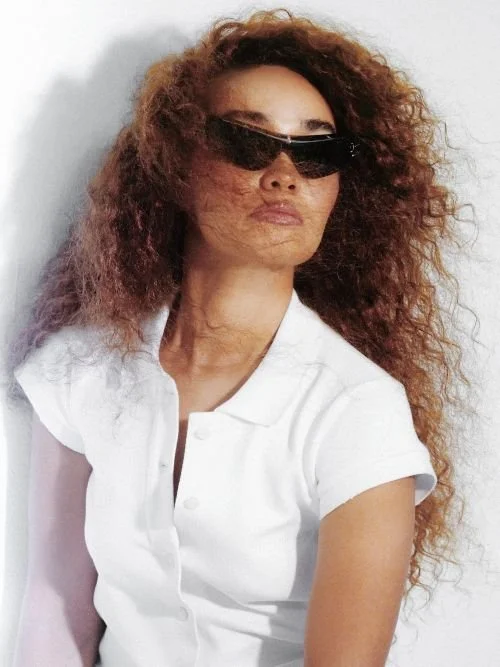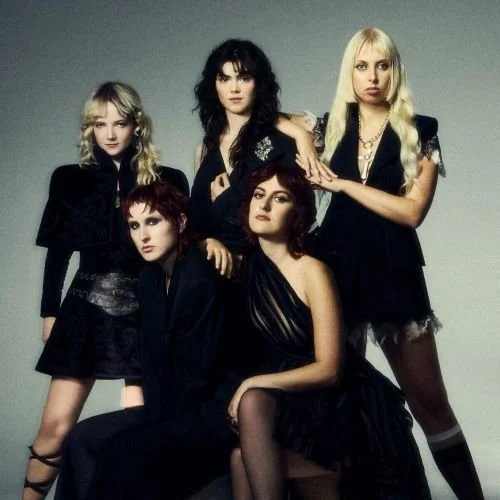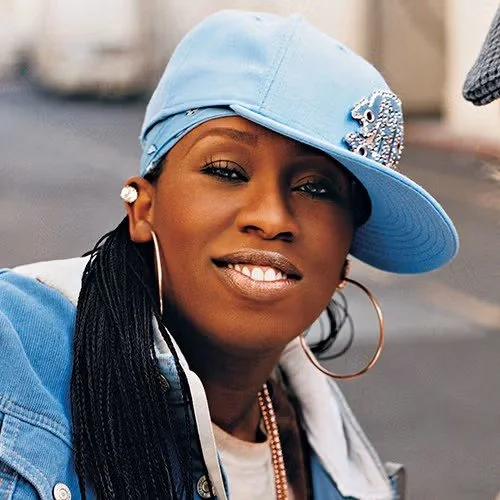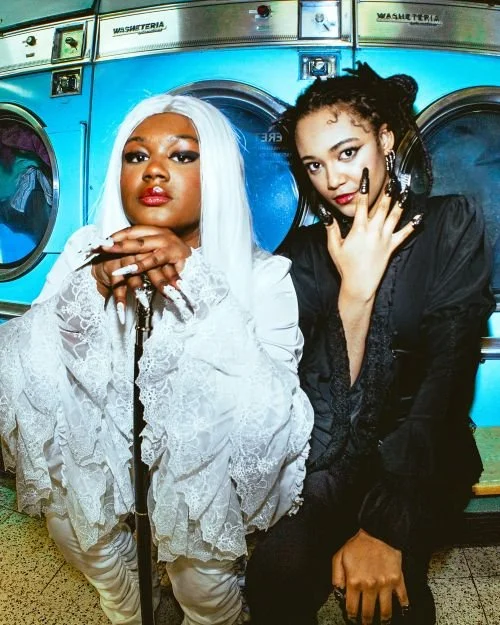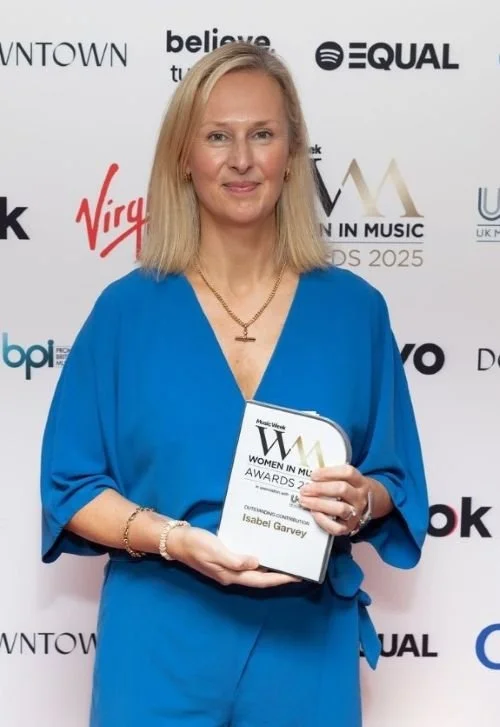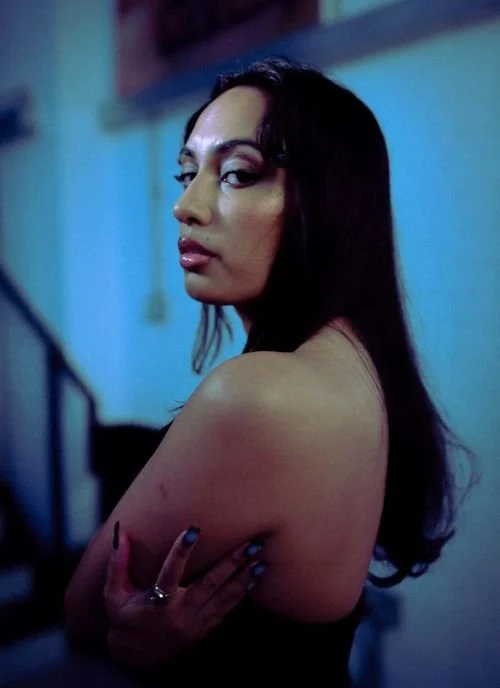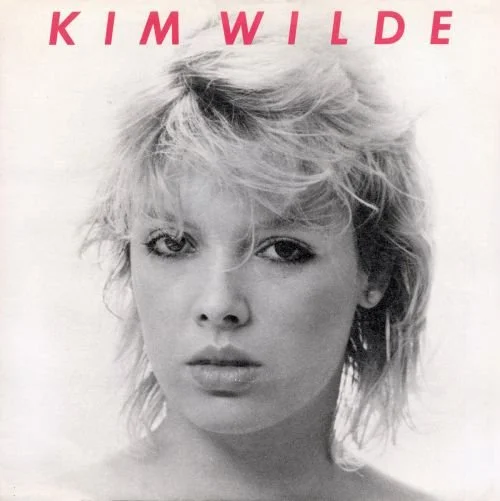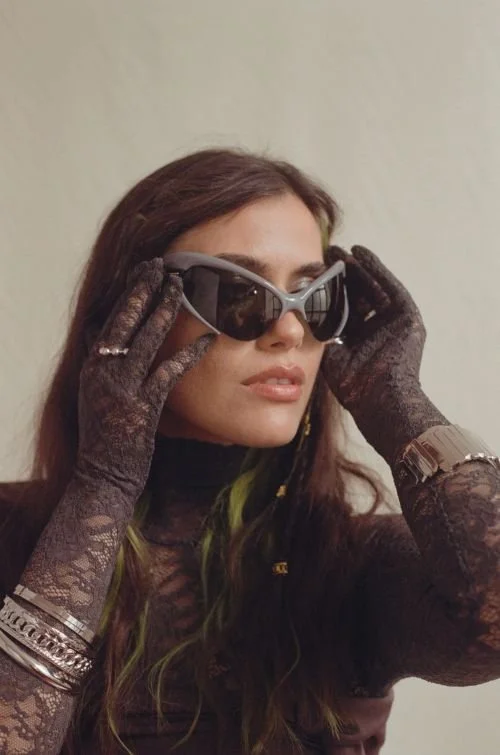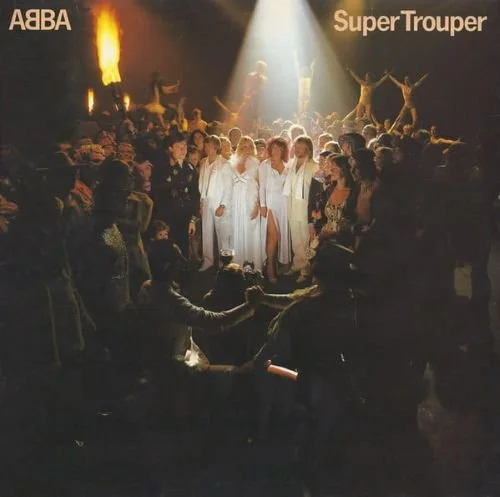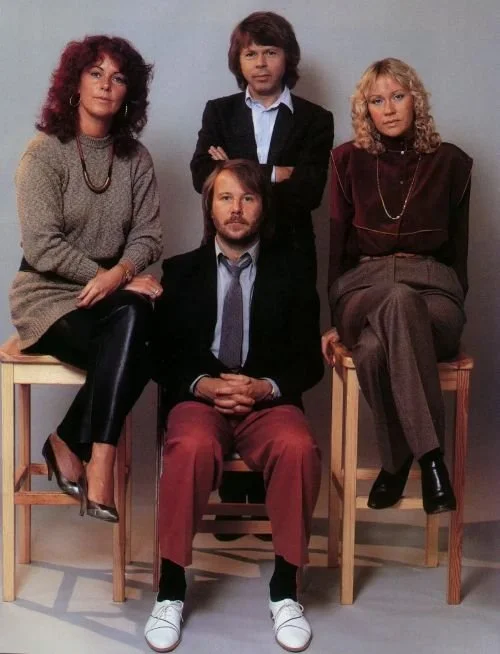FEATURE:
Unglamorous Profession
Steely Dan's Gaucho at Forty-Five
__________
GAUCHO is an album that was…
IN THIS PHOTO: Steely Dan’s Walter Becker and Donald Fagen/PHOTO CREDIT: Corbis via Getty Images
a bit of a crucial moment for Steely Dan. It would be their final album together until 2000’s Two Against Nature. Walter Becker and Donald Fagen had spent a lot of time in studios recording albums since they released their 1972 debut, Can’t Buy a Thrill. Their recording was always intense. So many musicians and takes. They might not necessarily call themselves ‘perfectionists’, though it is clear that there was this sense of expectation and standard. Aja, released in 1977, is their best album. In terms of everything coming together, Becker and Fagen were at their peak. Things changed by the time Gaucho was released on 21st November, 1980. I wanted to mark the forty-fifth anniversary of this album. It was pretty much Donald Fagen recording without Waler Becker for quite a bit of the album. Gaucho was not as critically acclaimed as Aja. Strains and problems within the group meant that they would not continue as a unit. Donald Fagen embarked on a solo career after and released The Nightfly in 1982. Becker would produce Fagen’s second solo album, 1993’s Kamakiriad. However, I think that Gaucho is one of Steely Dan’s best albums. It contains Babylon Sisters, Hey Nineteen and Time Out of Mind – three of their finest works. Before getting to some features about Gaucho, I want to first bring in an interview from Musician Magazine that was published in 1981:
“Three years, two hundred outtakes, a few mistakenly erased tracks, and one shattered shank after Aja, Steely Dan has come sauntering out of hibernation with a ravishing new record, Gaucho. It’s elegant, it’s extravagant; it shows again why Walter Becker and Donald, the masters of Ellingtonian Backbeat, Coolpop-Jazzrock, are the closest thing this generation has to pre-war sophistication of Porter and Berlin, Rodgers and Hart, Weill and Waller. If Aja convinced Woody Herman to let his big band loose on Steely Dan materiaf (Chick, Donald, Walter and Woodrow, 1978), prompted a Berklee College of Music songwriting analysis course featuring their work, and elevated the taste of the frat-dance college crowd, one wonders what kind of a dent Gaucho might make. One thing it won’t do is send Steely Dan back on the road, not even after Becker’s carcrunched leg heals completely. Nor will they perform in their native New York. So we are left solely — and quite happily — with the music at hand.
Which is, as may be expected by now, sublime and fragrant and audaciously smooth. Steely Dan Inc.’s revolving door of studio sidemen hasn’t stopped swinging yet — some 36 grace Gaucho — and I mean this in the musical sense as well: rarely have so many done so little spontaneous blowing for so much music that sounds so fresh. But it probably won’t sound that way upon first or second listen; chances are it will sound soft and round, blandly pleasant, almost superficial. With further listening, each of the record’s seven tunes opens and deepens, revealing the harmonic jewels and subtle understated solos. At first obscured by the dominant colors of the surface, background colors become apparent, much as they will in fine oil paintings as your eye moves closer and closer to them; rhythmic nuances make themselves felt; each piece eventually jumps out of bed with the others and goes its own way: the patina, a rather mundane orgy of highgloss sensuality, gives way to the substance — seven different compositions in profound intercourse with their own partners, their indigenous lyrics.
As for the lyrics’ subject matter, rest assured Steely Dan enters the ’80s with some timely tales of tawdry high- life and desultory desperation. Gaucho overflows with mystics, coke dealers, sexual rivals, gosling girls ignorant of ‘Retha Franklin, concupiscent Charlies out for “that cotton candy,’ playground hoopers, Third World schemers mobilized on First World lawns, surprisingly gay friends and bodacious cowboys. The stories are rich, richer than Aja‘s, the metaphors subversive and witty. For instance, the rival lover is introduced with the couplet, “The milk truck eased into my space/Somebody screamed somewhere.” All in all, we may say this about Steely Dan: the more things strange, the more they stay the same. I recently spoke with Messrs Becker and Fagen at an MCA rented suite of the Park Lane hotel on Central Park South in New York. As I entered the room, the two jokingly whined about the day’s previous interviewers; every one, it seems, had grazed over the parched grass of basic bio material, asking, “So did you two really meet at Bard College?” With furious swipes of my pen, I mimed scratching that one off the top of my list of questions and mumbled something about my masterplan being destroyed.
MUSICIAN: It has been a considerable time since Steely Dan first started: how do you feel you’ve grown as artists, as musicians and lyricists, since that time?
FAGEN: [Long pause] It’s a matter of maturing. Becoming more selective with material, knowing what to write about, being able to pick and choose — showing more discretion than in the earlier days. Musically, our harmonic vocabulary and so on has expanded a great deal. so I feel we’ve progressed a lot since our first records. They are plain embarrassing, if you listen to them.
MUSICIAN: When you look back at your older work — as all artists, regrettably or enthusiastically, must do — do you think, “Oh God, that just wasn’t it at all”?
FAGEN: [ Laughs] Well, yeah, you know I don’t listen to our old records, but if I happen to hear one on the radio, my general feeling is humiliation. I don’t really understand some of our earlier stuff.
BECKER: [Limping slowly back into the room] You mean: why would we do a thing like this or that?
FAGEN: In terms of why we would do certain things musically and also lyrically.
BECKER: Like, say ” My Old School”? Gimme a for instance…
FAGEN: Not that one so much. That one has taken on a certain, well, it’s improved with age. I’m trying to think of a really embarrassing one, but I can’t off-hand.
MUSICIAN: At what point can you begin to stand yourself, listening back? 1974? 1975?
FAGEN: The next album I like pretty well. The one we haven’t done yet. The rest of them are fairly humiliating.
MUSICIAN: You don’t feel Gaucho is what you want to sound like?
FAGEN: Well, on the humiliation scale each album gets lower and lower. I think starting with Pretzel Logic, I began to like a few cuts here and there as things I can really listen to.
MUSICIAN: How do you feel, Walter?
BECKER: Differently. But I don’t listen to them either. I mean there were a lot of things that were very shoddily done, and a lot of things that were just bad, but probably different things for me than for Donald. We were doing the best we could, but fuck it, it wasn’t very good. It’s like looking at yourself in a mirror: it’s not how you really look. Left-handed people look weird. I don’t know whether it’s ultimately good or not, I really don’t.
MUSICIAN: Which brings me to another question. I know you agonize over your lyrics. Does it ever frustrate you that with many or most of the people listening, they may being going in one ear — and with little in between to stop them — right out the other? That all they may want is a beat and a hummable melody?
BECKER: I assume that’s the case for most of the audience, or at least a big part of it, and that’s why we try to always make the lyrics not grab your attention. We want them to sound good with the music, even if you’re not an English-speaking person.
MUSICIAN: But for those that are listening, atlas and dictionary in hand, you don’t want the lyrics to be one-shot deals, like a comedy record that you put on once and it gets tired pretty quickly after that.
BECKER: That’s definitely a problem. We have to be clever, but not funny.
FAGEN: We have a problem, trying not to cross the comedy threshold.
BECKER: Every time someone’s in the next room when we’re writing a song they’ll say, ” Don’t tell me you’re fucking writing songs in there, you’re not working, ‘ cause you’re fucking screaming and laughing in there. You’re not writing, you’re making up Pope jokes.”
FAGEN: Sometimes Walter comes up with a line, and it’s just too fuckin’…
BECKER: Funny. The whole thing would just stop; it would be like making Spike Jones records.
FAGEN: Suspension of disbelief would stop; there’d be laughter. You have to keep the equilibrium, have to maintain the irony, without getting into yuk-yuk territory”.
There are some interesting features that take us inside Gaucho. How it was a difficult and challenging time for Donald Fagen and Walter Becker. How it really shouldn’t have sounded as good as it does given the fracturing and turbulence within the ranks. In 2020, for its fortieth anniversary, Albumism highlighted this. Even so, I feel that Gaucho is one of their finest works. A wonderful Steely Dan album that I have always loved. It was a hard task following up Aja:
“Gaucho is nothing shy of a miracle in its creation, which was plagued with problems so deep that a superstitious man might call it cursed. So, it’s right, somehow, that the curse should finally break, exactly 40 years later, as we are collectively miring through the worst year most of us can remember.
In late December 1979, the two were working on “The Second Arrangement,” which Donald Fagen and Walter Becker, as well as Nichols and producer Gary Katz, agreed was their favorite song on the album. But a careless studio tech erased all but 19 seconds of it, and though attempts were made to re-record, it was never up to Fagen and Becker’s standards, and the song was abandoned, “Third World Man” substituted in its place.
Demos have floated around the internet for years; there are groups dedicated to cleaning up the demos to as close to studio perfection as one might have. The band has only performed the song live once, at the “Rarities Night” show at the Beacon Theatre on September 17, 2011. I was there in the balcony, the first of many, many Steely Dan shows. It’s a story I tell anyone who will listen, a date I remember as closely as my wedding anniversary.
But the plagues didn’t stop there. Becker was not only struggling with his own drug addiction—sometimes not even showing up for sessions. Fagen himself was depressed and tired. In January 1980, Karen Stanley, Becker’s girlfriend, died of a drug overdose in their home. He was sued by her family for introducing her to drugs, a case settled out of court in Becker’s favor. Four months later, he was hit by a car, breaking his leg in multiple places, leading to a six-month recovery that kept him out of the studio. He listened to the tapes at home, working out parts with Fagen over the phone.
As such, “Time Out of Mind,” a poppy, pleasurable, Michael McDonald-aided confection that makes doing heroin sound like the most fun thing ever, feels like a weird inclusion, practically a mockery of Becker and Stanley’s struggles with addiction.
Even “Glamour Profession,” with its shadows and midnight dumplings, recognizes the seedy underworld beneath the slick coo of Fagen’s electric piano. Like “Babylon Sisters,” the narrator —or rather, the backup singers, including Valerie Simpson, who act as his conscience—know that he is only a momentary pleasure, a kept man for the Showbiz Kids—in this instance, a Lakers player—who would dispose of him as soon as it comes time for him to undertake the rehab-and-redemption part of the Hollywood fairytale”.
It was unfortunate that this incredible perfectionism and the issues with the group coincided. Layering tracks to the maximum, some would say that Gaucho required stronger editing. Maybe stripping it back a bit. Some of the critical reviews in 1980 and 1981 compared it unfavourably to albums from Steely Dan they felt were superior. In years since, Gaucho has been re-evaluated. Acknowledged as one of the greatest albums. This feature explores an album that, through its recording sessions, they employed forty-two different musicians:
“When Gaucho finally surfaced in 1980, any fears that Steely Dan might relax their exacting standards were silenced with the first needle drop. Perfectionist obsessions that had driven songwriters Walter Becker and Donald Fagen remained audible in the sheen of the set’s seven songs. If anything, the arrangements were even more meticulously groomed, their sonic finish smoother yet than on Aja, the acknowledged masterpiece that preceded it three years earlier.
Before Aja elevated them to multi-platinum stature, Becker and Fagen had pushed each new LP further toward ambitious musical and technical goals. Since downsizing from working band to floating studio workshop, they cast an ever-widening net to recruit heavyweight musicians, earning a reputation as demanding taskmasters willing to burn through miles of multitrack tape in pursuit of the perfect take. From the outset they aspired to the state of the recording art, long before Aja became ubiquitous as a demo disc for high-end stereo salons.
Gaucho continued the mission that Becker, Fagen, producer Gary Katz and engineer Roger Nichols began with Steely Dan’s 1972 debut album, but completion required navigating a maze of technical, legal and personal obstacles after the songwriters moved back to New York following six years in Los Angeles. Lawsuits, false starts, lost master tapes, a debilitating injury and an overdose death stretched the interval between Aja and Gaucho to three years.
In all, they recorded a dozen songs during sessions at studios in New York, Los Angeles and Philadelphia, comparable to prior albums, drawing from a pool of 42 musicians. On the eve of its release, Becker and Fagen noted a greater reliance on layering tracks. One casualty of the overdubbing process resulted from an assistant engineer’s accidental erasure of nearly three weeks’ work on “The Second Arrangement,” an early contender for one of their most promising tracks.
Other technical hurdles included tests of the Soundstream system, one of the first digital audio recorders. Ultimately, they chose to stick with analog tape after deeming the sound “different but not necessarily better,” in Becker’s estimation.
Then there was Wendel, a costly adventure to mate the complexity and nuanced touch of world-class drummers with the mechanical precision of disco. Roger Nichols volunteered to tackle the challenge, drawing from his earlier career as a nuclear engineer. Six weeks and $150,000 later, Nichols delivered a 12-bit digital editor enabling them to manipulate and tame dozens of takes into a final rhythm track.
That quest for the perfect groove proved a key denominator across the album, which retreats from bolder shifts in meter to tilt toward steady R&B, Latin and, yes, even muted disco pulses.
The finished album dovetails seamlessly with Aja’s bespoke arrangements. That album had proven a tipping point in Becker and Fagen’s overall ensemble design, stepping further away from rock instrumentation to sculpt the material with keyboards, percussion and horns. Gaucho upholds that elegant restraint with “Babylon Sisters,” a laid-back ode to Cali decadence that kicks off the set with studied nonchalance.
“Drive west on Sunset to the sea,” Fagen directs his companions in anticipation of a three-way tryst set to a faintly anesthetized reggae pulse, undercutting the singer’s salacious come-on to the “sisters.” “This is no one-night stand, it’s a real occasion,” he insists, only to compare their rendezvous to “a weekend in TJ…it’s cheap but it’s not free” before female vocalists offer a soothing refrain that’s a thinly disguised warning: “Here come those Santa Ana winds again,” they coo, alluding to “devil winds” that blow west from the California deserts that Raymond Chandler and Joan Didion notoriously invoked as harbingers of chaos”.
I am going to finish with a review from Pitchfork. Alex Pappademas wrote a book with artist Joan LeMay in 2023. Quantum Criminals: Ramblers, Wild Gamblers, and Other Sole Survivors from the Songs of Steely Dan explored the characters in Steely Dan’s work. Gaucho has a fair few, including the Babylon Sisters, The Gaucho, the Third World Man, the Dread Moray Eel (Glamour Profession) and The Dandy of Gamma Chi (Hey Nineteen). Pappademas holds a lot of love for Gaucho:
“It’s their most obviously L.A. record, so of course they made it in New York, after spending years out West making music so steeped in New York iconography it practically sweated hot-dog-cart water. And it’s also the most end-of-the-’70s record ever made, 38 minutes of immaculately conceived malaise-age bachelor-pad music by which to greet the cold dawn of the Reagan era. The characters in these songs have taken an era of self-expression and self-indulgence as far as they can. They’re free to do and be whatever and whoever they want, but all that severance of obligation has done is isolate them from other people.
The only character who’s having any kind of communal fun is the coke dealer on “Glamour Profession,” who makes calls from a basketball star’s car phone and takes meetings over Mr. Chow dumplings with “Jive Miguel…from Bogotá.” Everyone else is lost out there in the haze, having mutually demeaning sex or reaching for human connection in angry, possessive, usually futile ways. “Gaucho” and “My Rival” are both about relationships into which some threatening/alluring interloper has driven a wedge; both “Hey Nineteen” and “Babylon Sisters” are about older guys who chase younger women and wind up feeling older than ever. Things fall apart, the center does not hold, there’s a gaucho in the living room and he won’t leave, and it’s getting hard to act like everything’s mellow.
There’s a precisely calibrated mix of empathy and irony in the way the Dan observe these poor devils, these sinners in the grip of a checked-out God— Becker, perfectly, called it “a sneer and a tear.” This is, at points, a very funny record—particularly the title track, whose unfolding absurdity builds to the moment where the narrator, having caught his lover holding hands with a bodacious cowboy in a spangled leather poncho, cries out, “Would you care to explain?” in high dudgeon worthy of Frasier Crane.
When Becker and Fagen started making this music, it was 1978, and they were coming off the platinum-selling Aja, the biggest hit they’d ever had. They briefly toyed with the idea of putting together a band and touring—a form of strenuous exercise they’d given up years earlier—but instead they went back to work on new music, and didn’t emerge from the studio until late 1980. One of the first tracks they finished was “The Second Arrangement,” a blithe kiss-off from an unapologetic Jaguar-driving lothario whose faithlessness is suddenly fashionable. You can find the song on YouTube in various states of completion—a piano demo with Fagen trying a shaky falsetto on the chorus, a polished instrumental, a bootlegged-sounding full-band version whose discoid thwack evokes a waterlogged “Get Lucky”—but you won’t find it on Gaucho. After an assistant engineer accidentally erased a large chunk of the master tape, Becker and Fagen tried for a while to recreate the track, then gave up on it entirely. It wasn’t the only good song they discarded during the sessions—even with all the king’s sidemen at their disposal, they couldn’t capture “The Bear” or the surreal colonialist fever-dream “Kulee Baba” either—but it might have been the best song on the album if it had survived. They replaced it with the merely-very-good “Third World Man,” a retooled track left over from the Aja sessions, featuring a downhearted soliloquy of a guitar solo by Larry Carlton, who was reportedly surprised to discover he’d played on Gaucho.
In January 1980, Becker’s girlfriend Karen Stanley, who Becker later said had struggled with depression, died of what may have been an intentional overdose in Becker’s apartment. Then, in April of that year, while walking on a New York street, Becker was hit by a taxi cab. He spent seven months in a cast with a fractured tibia and was effectively sidelined from the studio for most of the three laborious months it took to mix Gaucho. Mixing was Becker’s forte; Fagen was left to muddle through. During a visit to the studio in summer 1980, Palmer watched him sit with Katz and Nichols, “inhaling a cigarette in spasmodic gulps” while endlessly retooling the fade-out at the end of “Babylon Sisters,” eventually spending four hours fiddling with fifty seconds of music.
Of the nearly 40 consummate studio pros whose work at the Gaucho sessions made the final cut, the player with the heaviest footprint belongs to “Wendel,” a Paleolithic 12-bit sampling unit designed and built by Nichols, deployed by Becker and Fagen to impose a drum-machine-like consistency on the work of live drummers like Steve Gadd and Rick Marotta. “In the ’80s,” Becker told Mojo years later, “hand-crafted, hand-played music was being overtaken by this increasingly mechanical, perfectionist machine music, and we were just trying to get there first. They had all these disco records that were just whack-whack, so perfect, the beat never fluctuated, and we didn’t see why we couldn’t have that too, except playing this incredibly complicated music…It seemed like a good idea.”
Of course, the computerized micro-tweaking of live instrumentation is now as commonplace a part of pop-music production as reverb, but back then the option to program with real drum hits was tantamount to magic, especially for two guys who’d spent much of their professional lives being just a tiny bit disappointed by some of the finest session musicians on the planet. But Wendel was also a bit of a prickly collaborator. “[E]ven the most minute event,” the band wrote in the liner notes to a 2000 reissue of Gaucho, “had to be programmed in the gnarly and unforgiving 8085 Assembly Language, in which all relevant parameters needed to be described in its baffling hexagesimal-base numerical system, which ultimately became the only language Roger Nichols spoke or understood, at least for a time”.
On 21st November, we mark forty-five years of Gaucho. Although we sadly lost Walter Becker in 2017 and he will not get to see this album being celebrated and discussed on the day, I do wonder how he viewed that period. Especially tough for him, I am glad that he and Donald Fagen got together for two more Steely Dan albums and toured together until Becker’s death. I think that Gaucho is an incredible album with some of Steely Dan’s best songs. If you have not heard this album in a long time (or ever), then seek Gaucho out and…
PLAY it in full.







